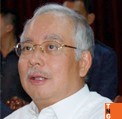A person was killed and four were injured in a French nuclear waste treatment plant on Sept 12, 2011. This piece of news drew my mind to the fact that debate over nuclear waste treatment and disposal in the light of Malaysia’s own nuclear plans, is still lacking. More often, worries are focused about potential meltdowns in nuclear plants. This is because although the probability of a meltdown is low, its impact could be devastating, as we have seen in Japan‘s case.

Prime Minister Datuk Seri Najib Razak has said nuclear power remains an “option”, and that a study is being conducted to identify suitable sites for nuclear plants. Tellingly, it was reported that the Malaysia Nuclear Power Corporation under the Prime Minister’s Department is searching for a public relations firm to build public support for nuclear power.
Public reactions have been strong against the building of nuclear power plants. While there are pros and cons to nuclear power, despite the risks, it is recognised as the only long-term replacement available for decreasing fossil fuels in terms of continuous bulk energy supply.
So if the government is really going to go ahead, I am personally more concerned with how we are going to store our nuclear waste. This must be answered. Are we going to ship the waste out and dump it in another country? Can we emulate Finland and build a huge underground storage to keep the waste away for the next 100,000 years?
Thinking into the future
In the US, nuclear waste remains a thorny subject. The country has been dumping nuclear waste at Yucca Mountain in Nevada for the past few decades, but has yet to find a permanent site to store radioactive waste. Similarly in the UK, nuclear waste has been stored temporarily at Sellafield while its government continues to search for a permanent dump site.
Is the same going to happen to Malaysia? Are we going to build our nuclear plants first and then scramble to find a suitable storage site for radioactive waste decades later, like the US and UK? I have requested the Malaysian Nuclear Agency for answers but to date, have not received any response.
Even if Malaysia does build a permanent storage facility to bury our radioactive waste, how are we going to ensure the waste would stay buried for thousands of years? I did not realise the scale of the problem and the engineering feat required until I watched the documentary Into Eternity made by Danish filmmaker Michael Madsen.
The documentary centres on Finland‘s permanent nuclear waste repository, currently under construction since 2004. It is expected to begin storing waste in 2020 and will permanently be sealed in 2120. It is supposed to last for the next 100,000 years.
However, Finnish experts admitted in the film that they cannot predict whether humans would still be around at that time. And even if humans were still around, no one could predict whether future generations would understand our present languages and signs. How do you communicate to people or other beings 100,000 years in the future that nuclear waste is hazardous and that they have to stay away from nuclear dump sites? How do you ensure they do not open a dump site at any cost, if they were to stumble upon one? Several ways were suggested in the film, including putting up menacing architecture, but perhaps the best way is to not to put any signs at all.
“Full” responsibility for our waste

The nuclear industry proudly proclaims that: “Nuclear power is the only energy industry which takes full responsibility for all its wastes and costs this into the product.”
Seriously, I wonder how the industry could make such a claim to full responsibility for radioactive waste that is likely to outlive human civilisations.
I sincerely hope that one day, scientists would find a way to transform the 300,000 tonnes of high-level radioactive waste that are accumulating worldwide in temporary storage facilities into non-radioactive elements.
But meanwhile, as much as I enjoy the convenience of abundant electricity and would like to continue doing so, I think Malaysia needs to consider whether we are okay with leaving behind such a legacy before we go ahead with our nuclear plan. ![]()
Gan Pei Ling still thinks Malaysia needs to try harder to take renewable energy like solar mainstream and implement energy conservation steps before going nuclear.


KohJL says
I hope more attention (and research grants) is given to technologies that could make renewable energy a viable source of baseload energy. Perhaps some sort of global electrical grid or huge banks of batteries. Or even nuclear fusion (very experimental, but creates no radioactive waste).
If the issue of a reliable baseload energy source is not addressed, I believe the nuclear (fission) option would remain on the table — and desirable only in light of the harms of coal power.